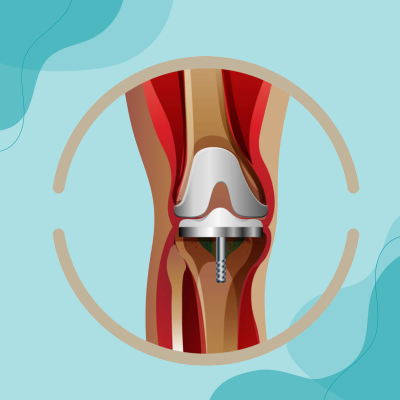Joint Replacement Surgery
Joint replacement surgery is a safe and efficient way to eliminate discomfort and get back to your normal routine.
If non-surgical therapy such as drugs and activity adjustments are no longer effective in reducing discomfort, shoulder joint replacement surgery may be an option.
This section will help you learn more about shoulder joint replacement surgery, whether you are just starting to look at treatment choices or have already made a decision.
Total Knee Replacement Surgery
Knee replacement, also referred to as complete knee replacement or knee arthroplasty, is a surgical procedure that resurfaces a knee that has been damaged by arthritis. Metal and plastic components are used to cover the extremities of the bones that make up the knee joint, as well as the kneecap. This procedure may be worth considering if you have severe arthritis or a catastrophic knee injury.
The knee is made up of the thighbone’s lower end, the tibia’s higher-end, and the kneecap. Articular cartilage, a smooth layer that protects the bones while allowing them to move easily, covers the ends of these three bones where they join. The menisci are found between the femur and tibia. The “resistance to shock” that these C-shaped wedges provide cushions to the joint.
The shin and tibia remain held together by large ligaments, which give stability. The knees are supported by the lengthy thigh muscles. A thin membrane called the synovial membrane covers the remaining surfaces of the knees. In a healthy knee, this membrane releases a fluid that softens the cartilage and efficiently eliminates friction.

What is total knee replacement surgery?
A knee replacement surgery consists of four essential phases.
- Get the bone ready. Damaged cartilage surfaces on the femur and tibia ends, as well as a tiny piece of the underlying bone, are removed.
- Place the metal implants in their proper places. Metal components are used to replace the lost cartilage and bone, re-creating the joint’s surface. Metal pieces can be cemented or “pressed-fit” into the bone.
- The patella should be resurfaced. With a plastic button, the undersurface of the patella is sliced and resurfaced. Depending on the situation, some surgeons do not resurface the patella.
- Place a spacer between the lines. To generate a smooth gliding surface, a medical-grade plastic spacer is put between the metal components.

What are the reasons to opt for surgery?
The following reasons to opt for total knee replacement surgery.
- Osteoarthritis. This is a “wear and tear” type of arthritis that develops with age. It usually affects people over the age of 50, but it can also affect younger people. The cartilage that cushions the knee’s bones weakens and wears away over time. Knee pain and stiffness resulting from the bones rubbing against one another.
- Rheumatoid arthritis is a type of arthritis that affects the joints. The synovial membrane that covers the joint becomes inflamed and swollen in this condition. The cartilage can be damaged by persistent inflammation, which can lead to cartilage loss, discomfort, and stiffness. Rheumatoid arthritis is the most frequent kind of inflammatory arthritis group of diseases.
- Arthritis is caused by a traumatic event.

When Surgery Is Necessary
Your doctor may propose knee replacement surgery for a variety of reasons. The following are common characteristics of people who benefit from complete knee replacement:
- Knee discomfort or stiffness prevents you from doing simple tasks like walking, climbing stairs, or getting in and out of chairs. You may find it difficult to walk more than a few blocks without experiencing substantial discomfort, necessitating the use of a cane or walker.
- Day or night, moderate or severe knee discomfort while resting
- Deformity of the knee
- Further Conservative therapies have failed.
What are the chances of recovery?
More than 97% of persons who have total knee replacement surgery report a significant increase in their ability to do daily activities and a considerable reduction in knee discomfort. However, you will not be able to perform anything more than you could before you had arthritis.
Every knee replacement implant’s plastic spacer begins to wear down with normal use and movement. Excessive exercise or weight gain can hasten the regular wear of a knee replacement, causing it to loosen and become painful. As a result, most surgeons recommend that you avoid high-impact activities like running, jogging, leaping, and other high-impact sports for the rest of your life after surgery.
Knee replacements can survive for many years if the activity is modified appropriately.
More than 95 percent of the total of current total knee replacements are still in good working order fifteen years following surgery. Following our orthopaedic surgeon’s post-surgical instructions and taking precautions to protect your knee replacement and overall health are critical ways you may help your surgery succeed.


